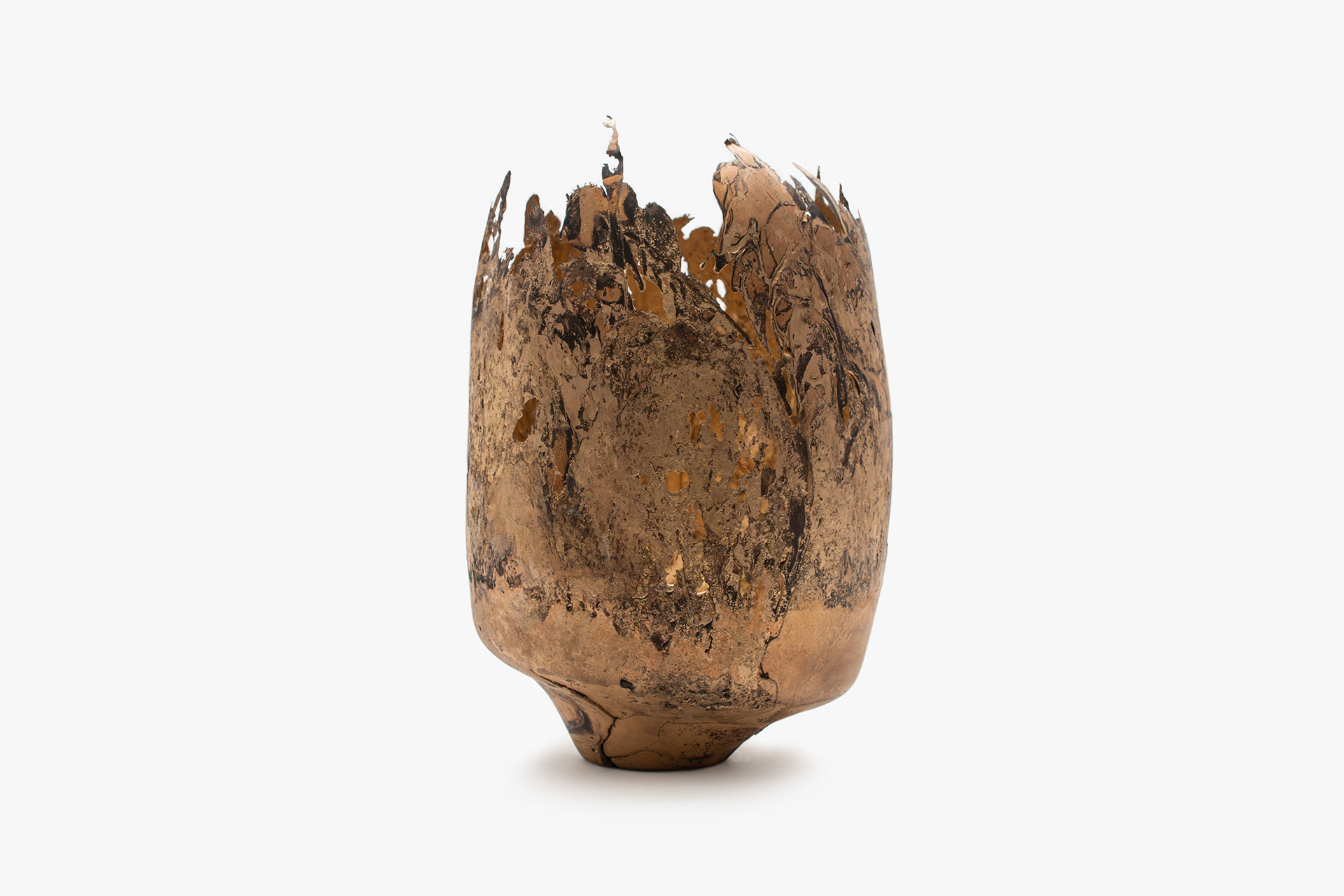
‘For some years I have been interested in matching the coefficients of expansion of glass and copper, so that the two could be fused on a molecular level and manipulated,’ explains Arbel. The multidisciplinary designer (and the mind behind lighting brand Bocci) has created 70 unique pieces for the launch exhibition, the result of his personal research work into the relationship between glass and copper. Now the gallery adds the Vancouver and Berlin-based Arbel to its impressive roster, with a new exhibition opening at the Athens location, featuring copper sculptures that result from an in-depth research process. Launched by Nicolas Bellavance-Lecompte and Quentin Moyse, since its inception Carwan Gallery has been championing the work of international designers from Carlo Massoud to Karen Chekerdjian, Rotor and Lindsey Adelman. The contemporary design gallery originally opened in Beirut in 2010, and the Greek move marks a new, important chapter in its history.

These whimsical touches are packed into a ground-floor living space that’s 1,250 square feet a 500-square-foot attic that the couple call their love nest, a refuge away from their 5-year-old daughter and a 1,300-square-foot basement that contains Meyer’s ballet barre and a guest suite.Carwan Gallery opens its doors in Athens, with a new gallery debuting in the city’s old port and an inaugural exhibition of works by Omer Arbel. Suspended from the ceiling is a pearlescent 2017 Bocci light fixture, 87, that stretches out like saltwater taffy. In the foyer, there’s a florid oak Calvet bench designed in 1902 by the Surrealist Spanish architect Antoni Gaudí instead of a coffee table, they installed a rock formation of polished marble boulders in streaky shades of Creamsicle, pistachio, black and jade. The rest of the home’s walls are of matte white-painted burlap, and the couple has placed sculptural furnishings throughout to keep the place from feeling too austere. His bathroom is covered in hexagonal tiles from Heath Ceramics, all of which are forest green you press a sole white aluminum panel to flush. He also despises drawer pulls and handles and pointed to the smooth cabinetry, noting his preference for “as few protrusions as possible.” Even the toilet is missing a handle. Arbel loathes unsightly light switch plates, so the kitchen doesn’t have any. To avoid feeling closed in, they streamlined the small rooms wherever they could.

“But instead, we thought, ‘Let’s try to respect the original architect’s vision and see how we do.’” This, in turn, allows them to live as previous residents might have: Once or twice a week, the family cooks a special meal in the compact kitchen and serves it in the adjacent formal dining room. “There’s a temptation to bust down walls and connect the dining room and kitchen,” Arbel says. Everywhere, there are doors made from Douglas fir that the couple often keep closed, creating intimate vignettes from room to room that rebuke the contemporary preference for open-plan environments. Although they spent two years restoring the entire structure, they kept the original layout, a counterintuitive choice that reveals itself immediately upon crossing the threshold. The place needed lots of work: The foundation had crumbled the basement had standing water. THE HOME THEY chose was the first they saw - a sage green Craftsman bungalow built in 1910 with a magnolia tree then in pink bloom beyond the front porch. “There’s a tension between these aggressive interventions and this unassuming interior.” The designer is seated at a round wooden table in his low-ceilinged kitchen on a damp Vancouver afternoon beneath a primordial aluminum light fixture he calls 44 (all of Bocci’s pieces are chronologically numbered), which was first exhibited in 2016 at the Barbican Centre in London and looms over him like a floating coral reef. In his own practice - he builds bespoke residences and objects for private clients and since 2005 has served as the artistic director of Bocci, a British Columbian lighting and glassblowing studio he co-founded - Arbel aims to “activate these traditional, cozy spaces with some extreme things,” he says. Then in 2015 he met a ballerina, Rachel Meyer, and after having a child together two years later, they decided to find a more conventional home, one fully at odds with his personal aesthetic. He had a windswept shack perched on a promontory overlooking the industrial port of Vancouver, British Columbia, the sort of experimental space - “no handrails,” he says, “and sharp things everywhere” - befitting an avant-garde architect and lighting designer. OMER ARBEL USED to live on the cliff’s edge.


 0 kommentar(er)
0 kommentar(er)
